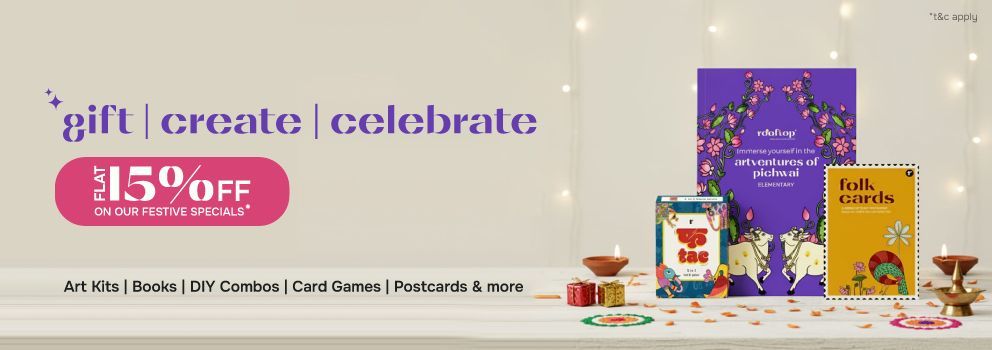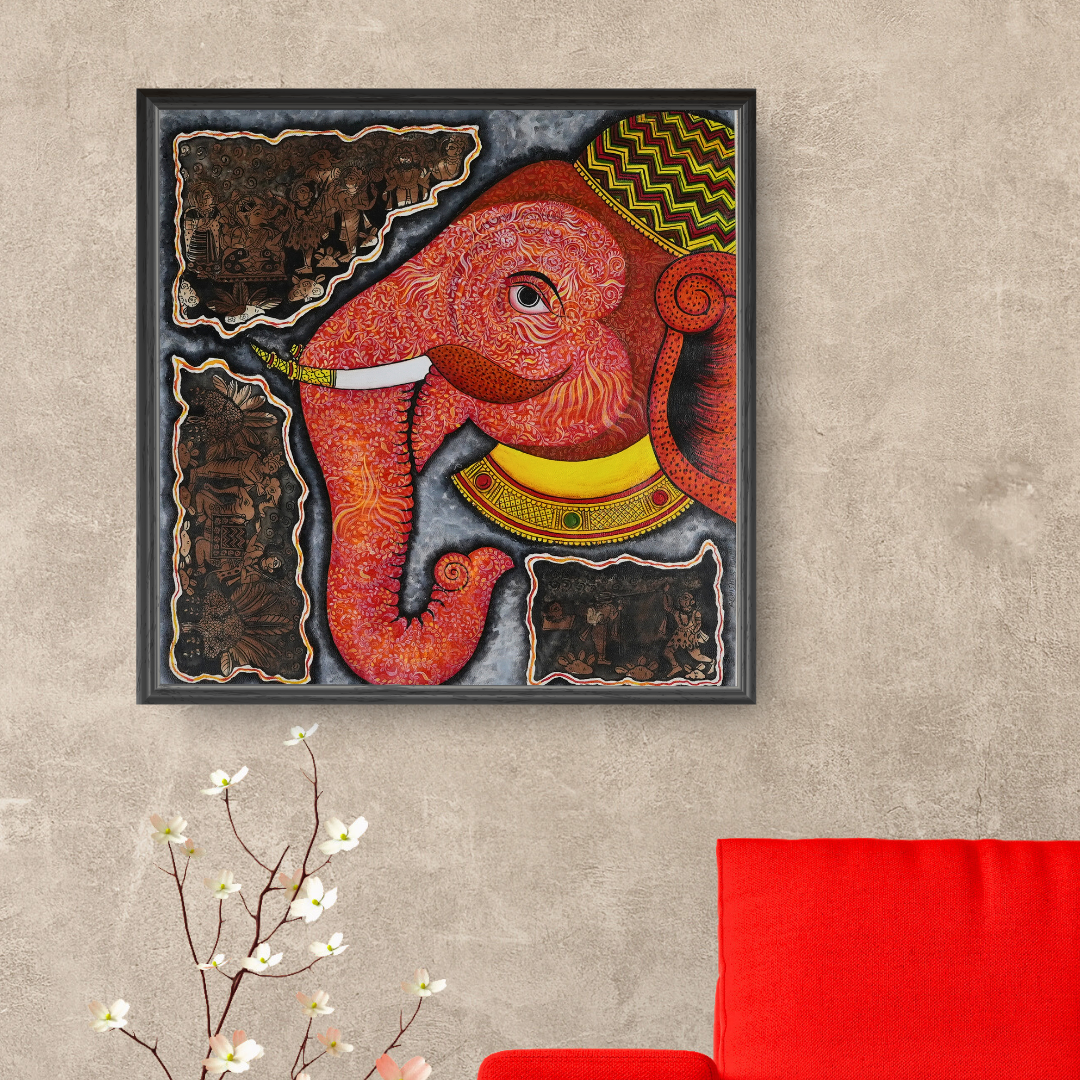Your Cart
Shop Original Phad Handmade Paintings Online
Discover Phad Art Painting at Rooftop
For more than 700 years, painters in Rajasthan have created scrolls called Phads. Some stretched 30 feet across and told entire epics in one sweep of cloth. These weren’t decorations. A Phad was a shrine on fabric, carried by priest-singers who travelled from village to village. At night, they opened the scroll, sang the story, and turned the painting into worship.
The Community Behind Phad
Phad painting grew in the Mewar region, with Shahpura in Bhilwara as its centre. For centuries, the Joshi family of the Chhipa caste guarded the tradition. They painted the scrolls, while travelling priests called Bhopas and Bhopis brought them alive with song.
When a Phad was unfurled in a village square, it wasn’t just art. It was a gathering that mixed devotion, music, and memory. The deity, whether Pabuji or Devnarayan, stood at the centre, and the entire community joined in through story and ritual.
How to Recognise a Phad
The style of Phad is bold and unmistakable.
Narratives everywhere: every inch of the scroll is filled with gods, warriors, animals, and attendants.
Figures in profile: most characters face each other, turning the surface into a stage.
Colours with purpose: red for valour, yellow for divinity, green for the earth, blue for water, and black for the outline. Ritual process: a young girl drew the first stroke to sanctify the cloth, while painting the deity’s eyes was the final act that made the Phad “alive.”
Unlike most paintings, a Phad was never meant to hang quietly on a wall. It was meant to be unfolded, walked around, and sung to.
From Scrolls to Modern Phads
In the 20th century, Shree Lal Joshi changed the course of the tradition. He painted not only Pabuji and Devnarayan, but also stories from the Ramayana, Mahabharata, and local kings. His innovation… creating smaller Phads that could be displayed at home—saved the form from fading away.
His son, Kalyan Joshi, carries it forward today, teaching and mentoring at institutions like the Chitrashala in Bhilwara. Other younger artists experiment with formats, but they keep the essence intact: bold outlines, flat compositions, and layers of storytelling.
That balance between tradition and reinvention is why Phad has survived when so many other scroll traditions disappeared.
Why Collect a Phad Painting
Owning a Phad is like holding a fragment of Rajasthan’s ritual history. It reminds us that once, an entire village gathered under the stars to listen to stories painted on cloth. The art has always been more than colour. It is prayer, performance, and a community’s way of remembering its heroes.
At Rooftop, Phad paintings come directly from the artists who carry this lineage. Each piece connects you not just to Rajasthan, but to the centuries of memory folded into every scroll.




